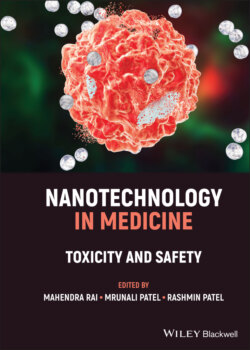Читать книгу Nanotechnology in Medicine - Группа авторов - Страница 20
На сайте Литреса книга снята с продажи.
1.4 Clinical Translation of Nanomedicine
ОглавлениеProf. Kinam Park of Purdue University has precisely pointed out that “It is time to review the progress made in nanomedicine, and examine the sources of difficulty in clinical translation, and move forward” in the cover story “The beginning of the end of the nanomedicine hype” in Journal of Controlled Release (Park 2019a). The research world of nanomedicine has produced abundant research articles with proof of concept aiming towards the same admirable endings of countless possibilities of nanomedicine. But the enigma around the quantitative data proving its clinical efficacy still prevails. It is time to understand that what we desire is not equivalent to what we have. At this phase, it is also obligatory to shift exorbitant prejudiced focus from smart nanoformulations for treatment of tumors toward investigative endeavors for discovering remedies for other types of diseases like CVS diseases, Parkinson's disease, Alzheimer's disease to name a few. It is necessary to allow and back the clinical production of new, promising formulations for diseases that are not linked to oncology. It is the time to promote the incorporation of nanomedicines into clinical trials of new promising formulations (Park 2019b). Nevertheless, there are numerous and nuanced problems in the clinical translation of nanomedicine (Wu et al. 2020). These include lack of business management education, especially at the academic level; difficulties in carrying out early‐stage preclinical characterization and safety evaluations; absence of protocols and access to characterization facilities; barriers in scale‐up and GMP production; reproducibility and stability of batch‐to‐batch engineered nanocarriers; the absence of adequate controls and badly specified essential quality characteristics; lack of cutting‐edge harmonizing assays and standard principle for toxicity estimation of nanomedicine products; the low quality and durability of the preclinical research that has been published; shortage of appropriate animal models for extrapolating the immunotoxicity data to humans; and complexity and heterogeneity within the regulatory framework (Gabizon et al. 2020; Martins et al. 2020). A key component of an effective clinical translation is the identification of the right patient and matching with the right nanoformulation.
